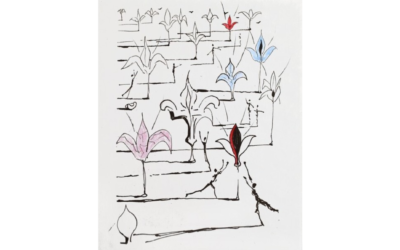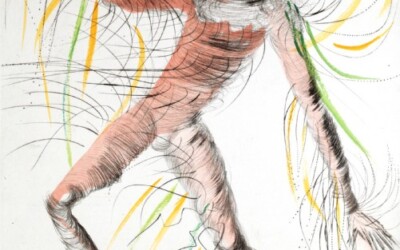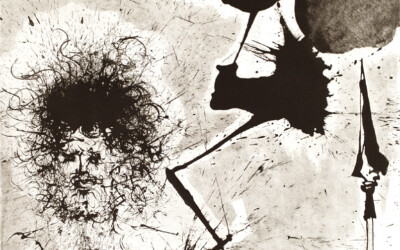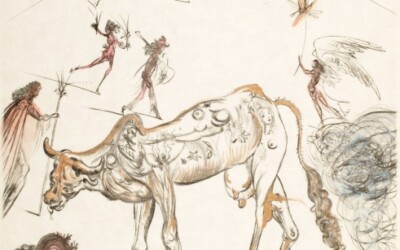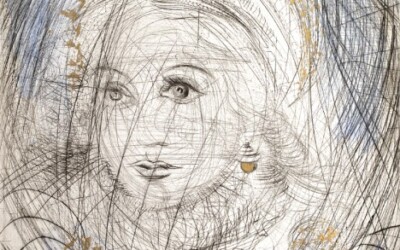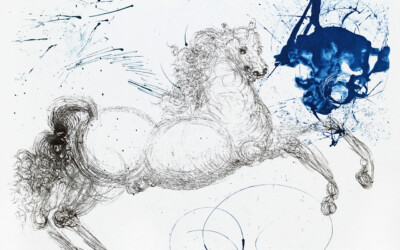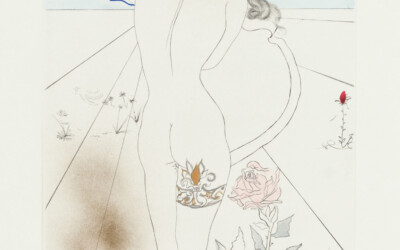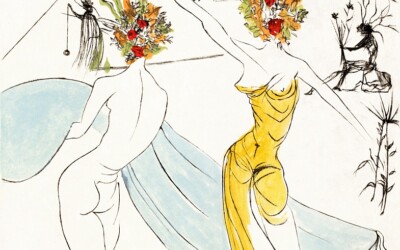SALVADOR DALI
The Cosmonaut
Jupiter
The Sacred Cow
Portrait of Marguerite
Argus in Color
Pegasus
One of the mythology’s most recognized creatures, Pegasus, was a winged stallion and son of Poseidon, born of the Gorgon Medusa. Poseidon is best known as the god of the sea but is also the god of horses. Dalí illustrated Mythology by drawing very closely upon the...
Women in the Waves
This individual etching is also from The Hippies Suite of II images. In 1969, Pierre Argillet came back from India with many photographs, which Dalí used as groundwork to create a series entitled “Les Hippies,” his interpretation of the “Love and Peace” years. The...
Nude with Garter
Flower Women with a Soft Piano
Artist Information
The Spanish artist, Salvador Dalí, is considered one of the most impressive artists of the 20th century, not only because of his paintings but also because of his eccentric character. Dalí was born in 1904 in Figures, Spain, nine months after the death of his older brother, who was also named Salvador. He started painting at an early age and attended Municipal Drawing School, where he first received formal art training, learned draftsmanship, painting, and engraving from Senor Nunez.
Having been already exposed to the artist movement and styles of Impressionism, Post-Impressionism, and Futurism, he was accepted to the Academia de San Fernando in Madrid. In 1929, Dalí made his first Surrealist Film collaboration with the director Luis Buñuel, Un Chien Andalou (An Adualusian Dog), joined the Surrealist group, and he met Gala Eluard, the wife of Paul Eluard, a Surrealist poet. She eventually became his wife, his muse, and influence behind many of his paintings. Other inspirational people for Dalí were Picasso, Miro, the architect Gaudi, and especially the landscape of Catalonia.
The Surrealist’s ideology was based on Freudian psychology, which systematized the analysis of dreams as revealed in images from the subconscious. Many of Dalí’s work during the 1930’s were intaglio prints that accompanied Surrealist books and periodicals. He took over the Surrealist theory of automatism but transformed it into a more positive method, which he named `critical paranoia’. According to this theory one should cultivate genuine delusion as in clinical paranoia while remaining residually aware at the back of one’s mind that the control of the reason and will has been deliberately suspended. He claimed that this method should be used not only in artistic and poetical creation but also in the affairs of daily life. His paintings employed a meticulous academic technique that was contradicted by the unreal ‘dream’ space he depicted and by the strangely hallucinatory characters of his imagery. He described his pictures as ‘hand-painted dream photographs’ and had certain favorite and recurring images, such as the human figure with half-open drawers protruding from it, burning giraffes, and watches bent and flowing as if made from melting wax (The Persistence of Memory, MOMA, New York; 1931).
Dalí visited Italy and adopted a more traditional style; this together with his political views (he was a supporter of General Franco) led Breton to expel him from the Surrealist ranks. He moved to the USA in 1940 and remained there until 1955. During this time he devoted himself largely to self-publicity; his paintings were often on religious themes (The Crucifixion of St John of the Cross, Glasgow Art Gallery, 1951), although sexual subjects and pictures centering on his wife Gala were also continuing preoccupations.
In the 1960’s Dalí experimented with Pop Art, as well as Abstract Expressionism, which eventually culminated in the stereoscopic paintings and holographs of the 1970’s. In 1970, Dalí and Gala parted ways and he gave her the Castle at Pubol and only visited her with written invitation. In 1982, Gala died at the Castle Pubol. With his muse gone, he no longer had the desire to create and only did a handful of paintings and prints. Before dying of heart failure in 1989, he lived as a recluse in a room adjacent to his Teatro-Museum.
Address
9280 College Pkwy, Suite 7
Fort Myers, FL 33919
(239) 674-6607
Open Tuesday - Friday, 12 pm - 5 pm
*Please contact us in advance to ensure we’re not out on a delivery*
Follow
Subscribe
Designed by GreenTree Digital | Copyright © 2023 SH Modern Art

